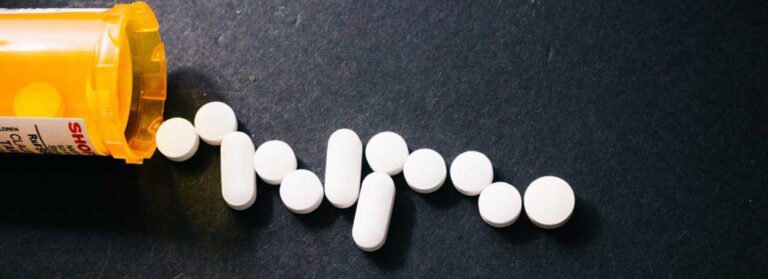How Dangerous is Combining Percocet and Xanax?
Combining multiple substances always increases risk. Combining uppers with other uppers has risks that vary from combining downers with downers. There are other risks and side effects associated with mixing uppers with downers. In the case of combining drugs like Percocet (oxycodone) and Xanax (alprazolam), a person is abusing a prescription opiate (Percocet) and a prescription benzodiazepine (Xanax). Both drugs are downers and depressants.
How Dangerous is Combining Percocet and Xanax?
Percocet is a highly addictive opiate. Percocet can be habit-forming and lead to both physical and psychological dependency after only a short period of abuse. It’s important to keep in mind that physical dependence to a drug like Percocet can happen with or without psychological addiction.
Combining Percocet and Xanax, or other opiates and benzos, can dramatically increase the likelihood of overdose.
Percocet and Xanax depress the body’s central nervous system. They go about doing this in different ways but the result of taking both substances is that you are essentially doubling down on the side effects. When combined, Xanax and Percocet increase the risk for respiratory depression. This means that your breathing can slow to dangerously low levels which can result in loss of consciousness and become life-threatening.
How does Polysubstance Addiction happen?
Polysubstance addiction happens when a person forms an addiction to one or more addictive substances. Sadly, this is not uncommon. Drugs like Xanax or other benzodiazepines (aka. “benzos”) and opiates (such as Percocet) have an increased potential for addiction for many reasons.
Xanax is intended for use as an anti-anxiety medication and is often prescribed to those who have panic attacks. Xanax is fast-acting and has a short half-life. This is part of why Xanax is a benzo with a high rate of addiction. The calming and euphoric effects of Xanax only last for a short period of time.
Xanax also metabolizes in the body more rapidly than other benzos and, in turn, can result in faster onset of withdrawal symptoms and cravings. The “crash” associated with Xanax leaving the body can increase anxiety and result in other negative mental health symptoms. Many who use Xanax are not fully aware of just how easy it is to develop a dependency on this substance.
The risks associated with opioids and opiates like Percocet are more widely known as a result of national news and awareness surrounding The Opioid Epidemic. Even with this increased awareness, the opioid epidemic has continued to ravage American families. Medical doctors and pharmacists are now more guarded about over-prescribing opiates like Percocet.
Keeping that in mind, opiates are still one of the most prescribed types of medications. In 2021, hydrocodone, a close relative of Percocet that is often prescribed under the brand name Vicodin, was one of the Top 10 most prescribed drugs in the United States. Hydrocodone is an opiate painkiller that is mixed with acetaminophen (Tylenol).
Having a polysubstance addiction can also mean that a person has formed an addiction to several substances without having a strong preference for any specific substance. It is possible to develop a polysubstance addiction by experimenting with combinations of drugs and end up hooked on those substances that are especially addictive.
What Factors lead to Polysubstance Abuse?
Studies indicate that adolescents have among the highest rates of polysubstance addiction. Children and young adults between the ages of 12–25 represent about half of the U.S. population that abuses substances. Half of this age group begins abusing substances by the time they reach their senior year of high school.
Evidence indicates that factors leading to polysubstance abuse can include:
- Social expectations
- Peer pressure
- Desire to numb emotions
These factors are especially common reasons why teens and young adults abuse substances. For older generations, polysubstance addiction has been linked to mental health issues including:
- Major Depressive Disorder (MDD)
- Bipolar disorder
- Personality disorders
Costs associated with proper medical care can be a factor in increased rates of polysubstance abuse. High costs of medical assistance and mental health treatments can lead individuals to attempt to self-medicate without medical oversight and observation. Experimenting with methods to manage your mental and physical health without professional medical supervision can lead to polysubstance addiction.
Common Signs of Polysubstance Addiction
Signs of polysubstance abuse and addiction can vary based on the types of drugs a person is using. Uppers are commonly abused for increases in energy and depressants are abused to calm, regulate, and for their side effects of euphoria.
Abusing substances to regulate your body’s ups and downs can be detrimental to both physical health and mental health and is known to increase the likelihood of mood instability.
Signs of polysubstance dependence can include
- Increased tolerance to multiple substances
- Withdrawal symptoms when changing or ceasing use of a particular substance
- Increased frequency of substance use
- Lack of control with regards to amount of substances that are being used
- Inability to cut back on substance use in spite of attempts to do so
- Lack of interest in activities and hobbies that previously brought joy
- Avoidance of social events and increased isolation from friends and loved ones
- Relationship problems have not deterred use of substances
- Lack of attention to family and childcare obligations
- Workplace and financial problems
Treatment for Polysubstance Addiction
The process of withdrawing from multiple substances is complicated. It’s recommended that those with polysubstance addictions undergo detox in a residential facility under medical supervision. High quality treatment facilities offer medical detox under 24/7 the care of expert medical doctors and mental health counselors.
Detox treatment centers can provide emergency care if a client has any unexpected medical issues that arise during the withdrawal process. Medically-assisted detox can also allow the option for physicians to provide suitable medications, such as antidepressants, that can ease the symptoms of withdrawal and reduce cravings.
Treatment methods used for polysubstance addiction vary based on each client’s individual circumstances. Abruptly ceasing use of certain medications can result in health issues. Xanax is an example of a drug that requires a taper method to avoid dangerous health risks. The most risky physical side effects associated with Xanax withdrawal involve changes in heart rate and the risk of seizures. Xanax withdrawal should always be taken very seriously.
Dangers associated with going cold turkey off Xanax can include:
- Mood swings
- Paranoia
- Mania
- Psychosis
- Convulsions
- Seizures
- Stroke
There is only one recommended method for ceasing use of Xanax and that is a slow taper. Rapid reduction in Xanax dosage can be life-threatening.
It’s important that clients are honest with medical professionals about the drugs they have used to make sure the proper safeguards are in place as a detox plan is created.
Contact Oasis Recovery to Begin Recovery Today
Polysubstance addiction requires expert personalized treatment in order to be most effective. At Oasis Recovery, we offer a range of programs that are safe and scientifically proven to be effective for healing from polysubstance addiction. These include:
- Detox
- Inpatient treatment program
- Intensive outpatient program (IOP)
- Partial hospitalization program (PHP)
- Aftercare program
We offer both traditional and holistic mental health therapies designed to treat the whole body. Our mental health and wellness therapy approaches include:
- Cognitive-behavioral therapy (CBT)
- Dialectical behavior therapy (DBT)
- Individual therapy
- Group therapy
- Family therapy
It’s a wise decision to consult with medical professionals before taking the appropriate health care steps for you or your loved one. We encourage you to contact Oasis Recovery today to speak with a specialist about treatment options that make the most sense based on your particular needs.













